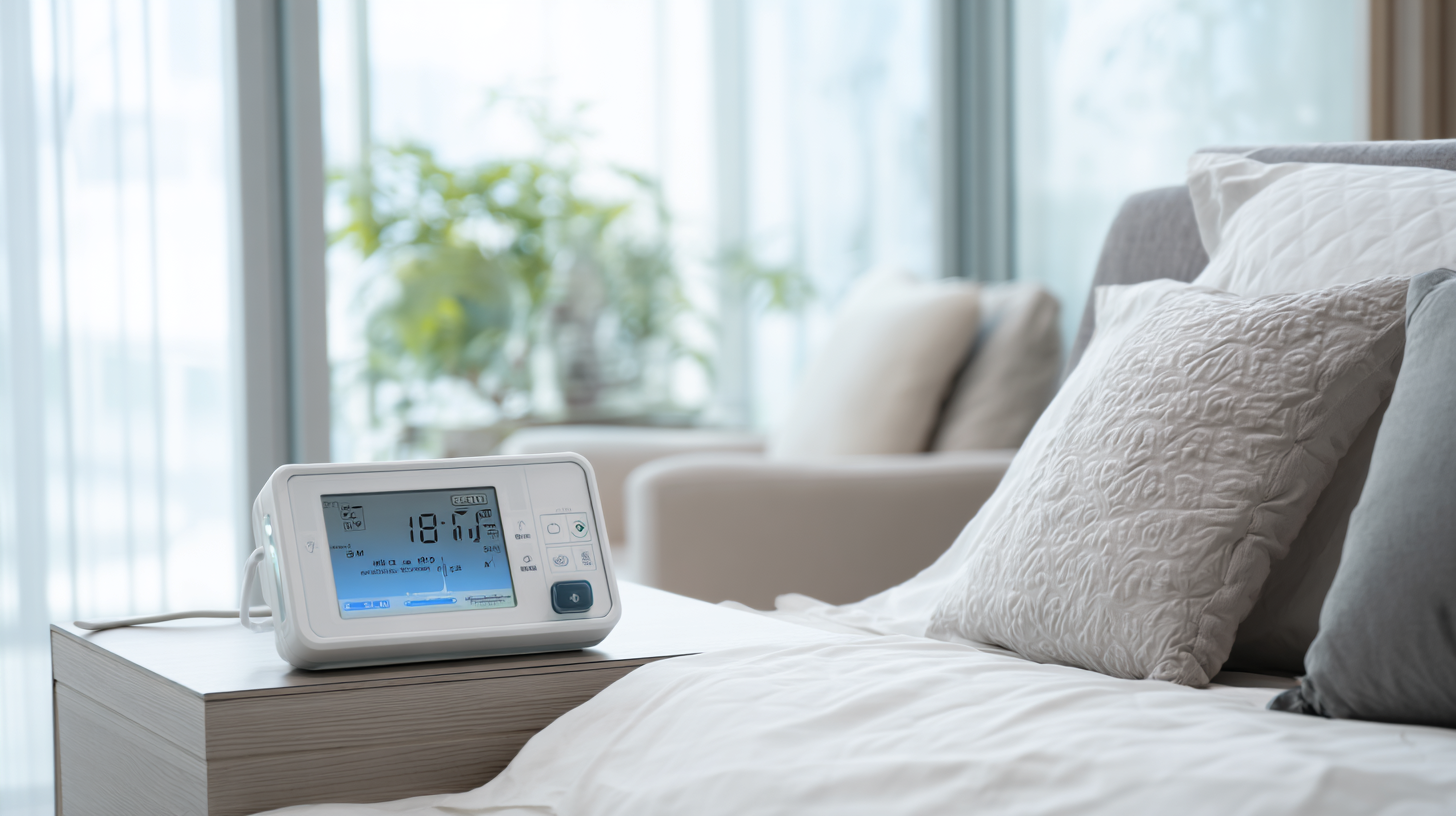Click here to browse our On The Mend Portfolio!
Exploring the Future of Home Health Supplies in 2025 with Innovative Alternatives and Technologies
As we look toward 2025, the landscape of Home Health Supplies is poised for significant transformation driven by innovative alternatives and advanced technologies. According to a report by Grand View Research, the global home healthcare market is expected to reach over $515 billion by 2027, with a compound annual growth rate (CAGR) of 7.9%. This growth is underscored by an increasing aging population, rising healthcare costs, and a shift towards patient-centered care that empowers individuals to manage their health from the comfort of their homes. Moreover, the COVID-19 pandemic has accelerated the adoption of digital health solutions, prompting a pivotal shift in how home health supplies are utilized. In response to these trends, the industry is exploring a variety of innovative products and services that could redefine patient care and outcomes, highlighting the pressing need to address the challenges and opportunities that lie ahead in the realm of Home Health Supplies.

Emerging Technologies Revolutionizing Home Health Supplies by 2025
As we move towards 2025, the landscape of home health supplies is being dramatically transformed by emerging technologies that enhance patient care and accessibility. According to a report by Market Research Future, the global home healthcare market is expected to grow at a CAGR of 7.9%, reaching approximately $500 billion by 2025. This growth is primarily fueled by innovations such as telehealth services, wearable health monitoring devices, and smart medication management systems. These technologies not only empower patients to take charge of their health but also enable providers to deliver more personalized and efficient care.
One of the most exciting developments is the integration of artificial intelligence (AI) and the Internet of Things (IoT) into home health supplies. For example, smart home devices equipped with AI can monitor vital signs and environmental conditions, providing real-time data to healthcare professionals. According to a study by Grand View Research, the IoT in healthcare market is projected to reach $187.6 billion by 2028, signifying a significant shift towards connected health solutions. This convergence of technology allows for proactive health management and reduces hospital readmissions, thus changing the way we think about care delivery at home.
Innovative Alternatives: Shifting from Traditional to Smart Home Health Solutions
As we approach 2025, the landscape of home health supplies is shifting dramatically from traditional products to smart home health solutions. According to a report from Grand View Research, the global smart home healthcare market is anticipated to reach $19.2 billion by 2025, growing at a compound annual growth rate (CAGR) of 25.6%. This surge is primarily driven by the increasing adoption of IoT devices and the need for remote patient monitoring. Innovative alternatives, such as wearable health trackers and smart medication dispensers, are now integral to personalized health management, empowering patients to take charge of their health from the comfort of their homes.
Tip: When considering transitioning to smart health solutions, invest in devices that are compatible with each other to create a cohesive healthcare environment. Look for equipment that offers real-time data tracking and user-friendly applications for seamless integration into daily routines.
Additionally, telehealth services are becoming increasingly accessible, with the Telehealth Resource Center reporting a 154% increase in telehealth visits in 2020 alone. As more healthcare providers embrace these technologies, patients can expect higher levels of convenience and reduced healthcare costs. Embracing innovative solutions not only enhances care quality but also encourages a proactive approach to health.
Tip: Research and choose smart health devices with strong user reviews and validated clinical proof, ensuring they meet your specific health requirements and improve your quality of life.
Exploring the Future of Home Health Supplies in 2025
The Role of AI and Machine Learning in Personalizing Home Healthcare Products
As we venture into 2025, the integration of AI and machine learning is set to revolutionize the landscape of home healthcare products. According to a report by Frost & Sullivan, the global home healthcare market is projected to reach $225 billion by 2025, driven by the growing demand for personalized healthcare solutions.

AI technologies enable manufacturers to analyze vast amounts of data to tailor products that meet individual patients' needs, thereby enhancing user experience and efficacy.
Machine learning algorithms can process patient histories, preferences, and real-time health data, creating customized supply recommendations. A study conducted by the Institute for Healthcare Innovation highlights that these personalized healthcare products can potentially reduce hospital readmission rates by up to 30%.
By prioritizing tailored solutions, the home health supplies market can not only improve patient outcomes but also significantly reduce healthcare costs, making it a critical component of modern health management strategies.
Sustainable and Eco-Friendly Options in the Future of Home Health Supplies
As we look ahead to 2025, the demand for sustainable and eco-friendly alternatives in home health supplies is becoming increasingly vital. With growing awareness around environmental preservation, manufacturers are striving to create products that not only meet health needs but also minimize ecological impact. Biodegradable materials, renewable resources, and energy-efficient production methods are set to transform the landscape of home health supplies, providing consumers with choices that reflect their values.
Innovative technologies are playing a crucial role in this shift towards sustainability. For instance, 3D printing is emerging as a game-changer in the production of medical supplies, allowing for localized manufacturing that reduces transportation emissions. Additionally, advancements in smart packaging are enabling better recycling processes and the use of less plastic.
As we embrace these green alternatives, the future of home health supplies promises to be not only healthier for individuals but also for the planet, fostering a sense of responsibility among users and producers alike.
Ensuring Accessibility: Designing Home Health Supplies for Every User in 2025
As we move towards 2025, the landscape of home health supplies is set to undergo a significant transformation, with a strong emphasis on accessibility. Designing products that cater to the diverse needs of users is crucial. Companies are actively researching innovative materials and user-friendly designs to ensure that individuals of all ages and abilities can benefit from these supplies. Features such as adjustable components, intuitive interfaces, and ergonomic designs are being integrated to enhance usability and comfort.
Tip: When selecting home health supplies, prioritize those with adjustable and customizable features. This flexibility allows tools and devices to accommodate various physical conditions, making them usable for a wider range of users.
Moreover, leveraging technology plays a vital role in this accessibility movement. Smart home health devices equipped with user-friendly apps improve interactions and monitor health conditions efficiently. These technologies not only streamline daily routines but also empower users and caregivers through real-time data and alerts.
Tip: Consider products that offer remote monitoring capabilities. This feature can enhance safety and provide peace of mind for both users and caregivers, ensuring that help is accessible when needed.

View Products
- Bathroom Safety & Shower Systems
- Canes, Knee Walkers, Rollators & Wheelchairs
- Compression Socks, Stockings & Custom Garments
- CPAP Machines, Devices, Accessories & Supplies
- Incontinence Supplies
- Lift, Reclining, and Sleeper Chairs
- Power Scooters, Power Chairs & Accessories
- Ramps & Handicap Access
- Stair, Platform & Portable Lifts
- Blog
Our Locations
Visit Us in CT, NY & CA
Looking for a 'medical store near me'? Call On The Mend for the equipment and service you need!
